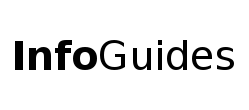
 | University Libraries
| University Libraries
Students will be able to critically engage with their own identities, biases, and ideas in order to contribute to the scholarly conversation. (Information Creation as Process / Scholarship as Conversation)
Some skills that teach to this outcome:
Activity 1:
Citation Mining activity where students are given a scholarly article and asked to find a few backward citations and one forward citation. Students will be given a worksheet that asks them to find the oldest citation from the provided article, look for journals that are cited more than once, any authors cited more than once. Have students choose one citation to find in the databases and compare it to the original source and look at the relationship between the two sources. Finally, have students use forward citation mining to find one source that cites the original article that was provided and compare the two sources.
Skills:
Assessment: Reflection Paper (based on one minute paper)
Students will write a short reflection about the activity with guiding questions.
|
Criteria |
0 |
1 (Poor) |
2 (Acceptable) |
3 (Good) |
Score |
|
Importance of Citations |
None |
Students offers brief response |
Student offers a well-defined response |
Clear, accurate explanation of citation use |
|
|
Scholarly Conversation |
None |
Student offers brief response |
Student offers a well-defined response
|
Clear, accurate explanation of the scholarly conversation |
|
|
How would they apply |
None |
Student offers brief response |
Student offers a well-defined response |
Student outlines a clear way they would use citations or scholarly conversation in their own research |
|
|
|
|
|
|
Total |
|
Activity 2:
Activity where students must seek out at least one source with a different viewpoint than their own/the majority of scholars. Students will use a worksheet that asks them to submit the following:
Skills:
Rubric:
After the activity is finished, collect the worksheets and evaluate them on the rubric below:
|
Criteria |
Checkmark |
Comments |
|
Completing the worksheet |
Worksheet is fully filled out. |
|
|
Reflection |
Reflection is at least 3 sentences and fully addresses what they learned and its effect on their view. |
|
|
Sources/Viewpoints |
Majority and dissenting viewpoints are included (with citations) and accurately explained. |
|
Ask a Librarian | Hours & Directions | Mason Libraries Home
Copyright © George Mason University